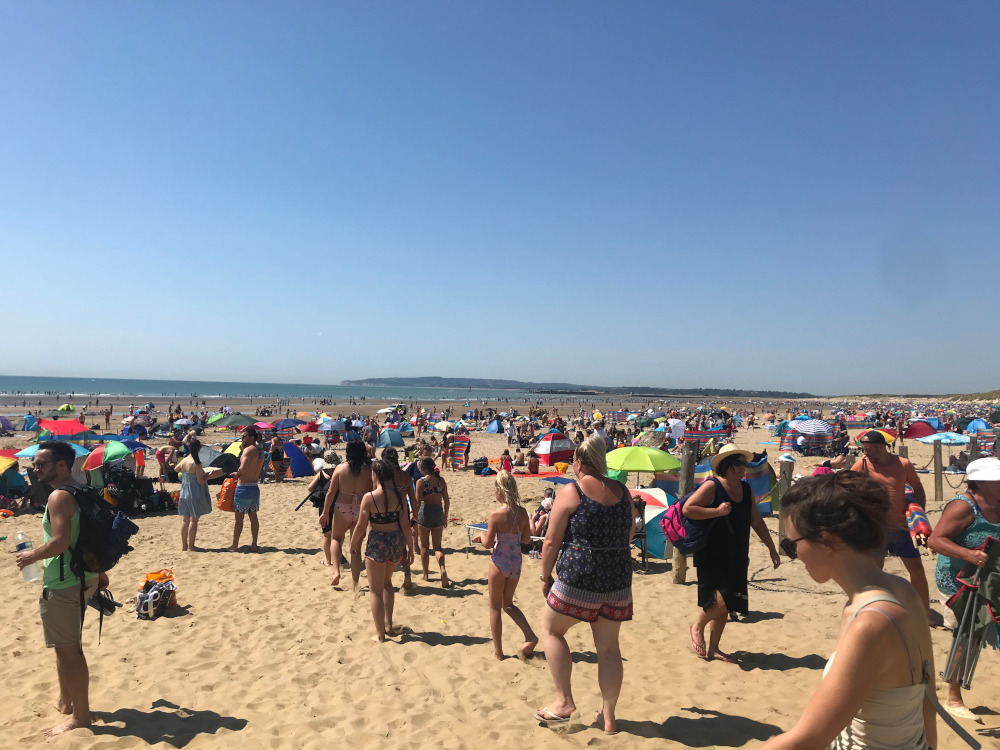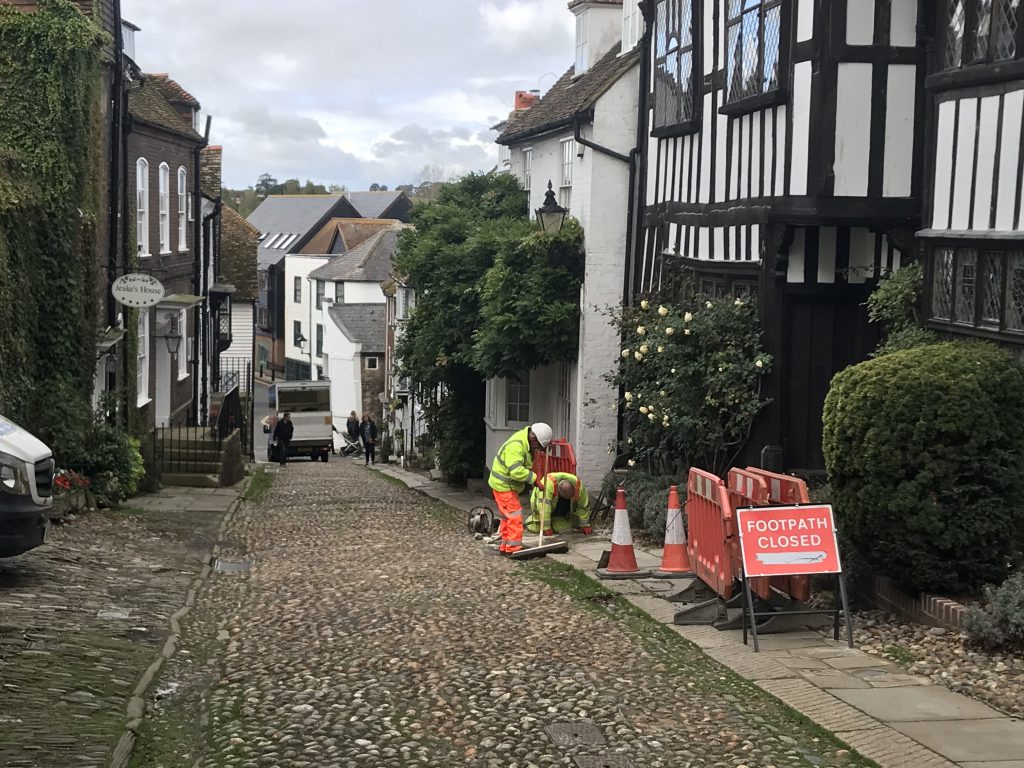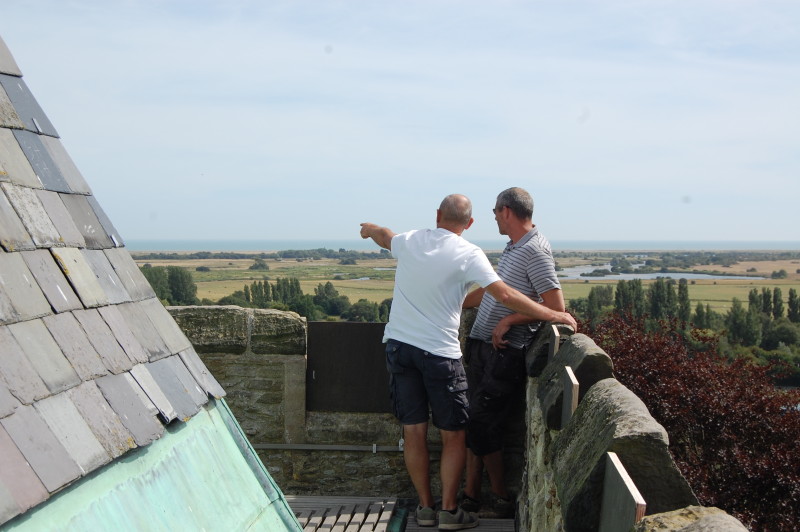Every week Rye News receives press releases from PR companies keen to get their client’s products or services mentioned in our columns. Generally, these are ignored either because there is no particular link with Rye and our part of Sussex, or because what they are trying to promote is already well known and probably covered in national media.
However, periodically, and it happened again this week, amongst these we get a notification that Rye has been voted (by whom, they never say) to be in the top 10 of the prettiest, most photographed, oldest, best beaches, quality of life and so on towns in the country. Similar superlatives are often to be seen in the national papers (the Sunday supplements being the favourite).
Now, one might think that this is all good stuff for a town that relies on visitors and tourism. And, of course it is. But, and this is the problem, the information contained both in these top 10 lists and, more often, in the purple prose of the travel writers is not always totally accurate and this can affect the first impression of any visitor, and it is first, not second impressions that matter.

For example, a recent newspaper article, as well as saying some very nice and, in fairness, perfectly true things about our town, also mentioned that it was “a stone’s throw” from the beach. Even an Olympian stone thrower (if there were such a thing) would, I think, have difficulty chucking a pebble that far. Imagine, therefore, the look of disappointment on the faces of a family who, loaded with picnic, windbreak, folding chairs and general beach paraphernalia, get off the train from London only to find that they have a two mile walk to the nearest beach.
Think also of the queues of cars that so often cause gridlock on a sunny summer weekend when Camber Sands is in demand. Yes, it is certainly a wonderful beach, well maintained and, with lifeguards and beach patrols in attendance, a good and safe place for a family outing.
Because of this, however, it is a very popular destination and beachgoers need also to be early birds if they are to avoid a queue several miles long and nowhere to park when they finally get there. On busy weekends, arrival by 9:30 or 10am at the very latest is imperative – not often mentioned in press reviews.

Rye has its origins in a time when towns were often built with defence against an enemy in mind. In our case that means it was built on a hill. Both station and the several car parks are at the bottom of that hill so a climb on foot is inevitable if one is to reach the historic areas of the town – known locally as the Citadel – and, depending on the route chosen, along a cobbled street not designed for granny, now a little unsteady on her feet, or the fashion conscious in their six inch heels.
So the message to those writing the top ten lists or the where-to-go pages of their Sunday newspapers, please check your facts and be accurate. Of course there will be some inconveniences – as with all historic places, the town was built long before anyone gave thought to life in the 21st century.
However, to all our readers who live far away (and this paper has many) and just want to visit, don’t be put off. Rye is a fascinating place and the small inconveniences are worth the effort to overcome. The cobbled streets may not be the easiest to walk on, but the ancient buildings they lead to are worth it and many have their own stories to tell. The Mermaid Inn for example, dates back to the 12th century, destroyed by the French in the 100 years war and rebuilt in 1420. The main fabric is largely unchanged since then and with its stories of smugglers, secret passages and ghosts. Walking past the Mermaid and on up the hill is Lamb House, once home to writer Henry James and later to EF Benson, of Mapp and Lucia fame, now run by the National Trust.

Right at the top of the town, surrounded by the cobbled streets and ancient buildings, is the parish church of St Mary, part dating back to Norman times and, for those willing to make the climb, a truly stunning view from the top of the tower across the marsh to the sea on one side, and over the roofscape of the town on the other – a view that a Rye resident hundreds of years ago would still recognise.
There is, of course, so much more to the town too, that the supplements often forget about. Quite apart from the many excellent pubs, tea rooms and restaurants, there are galleries catering for diverse tastes in art, a Heritage Centre, the museum of Rye, partly situated in the medieval Ypres Tower, and a wildlife reserve a little way outside the town. Add to this a jazz festival with top artists, an arts festival usually featuring well known names and performers from literature, theatre and music, together with the annual finale of bonfire night with societies from all over Sussex joining in a colourful and noisy torchlight parade along the High Street, culminating in an enormous bonfire and an always-superb firework display.
And for those of us who actually live here – why would we want to live anywhere else?
Image Credits: Nick Forman , Rye News library .




Many year ago (1970s or earlier), a family carrying beach gear asked me (in Cinque Ports Street at the top of the Station Approach) the way to the beach. My reply was “You are about a thousand years too late”. I then helped them with my suggestions!
Dr Nick Hudd, Tenterden.
I can beat that one. I was asked one day ‘where is Marks and Spencers’. The shocked expression from the visitor was classic.
Very well written article but exception is taken with the bit about granny, “Both station and the several car parks are at the bottom of that hill so a climb on foot is inevitable if one is to reach the historic areas of the town – known locally as the Citadel – and, depending on the route chosen, along a cobbled street not designed for granny, now a little unsteady on her feet…” I think it would be helpful to move away from ageist stereotypes of older people being a little wobbly and frail. I have seen far more overweight young people and adults huffing and puffing going up hills than ‘unsteady grannys’.